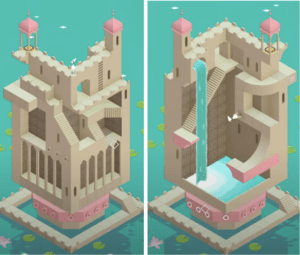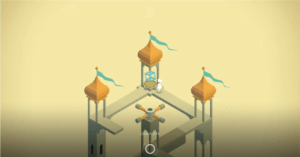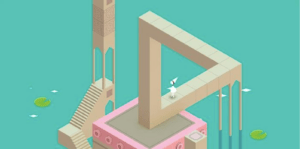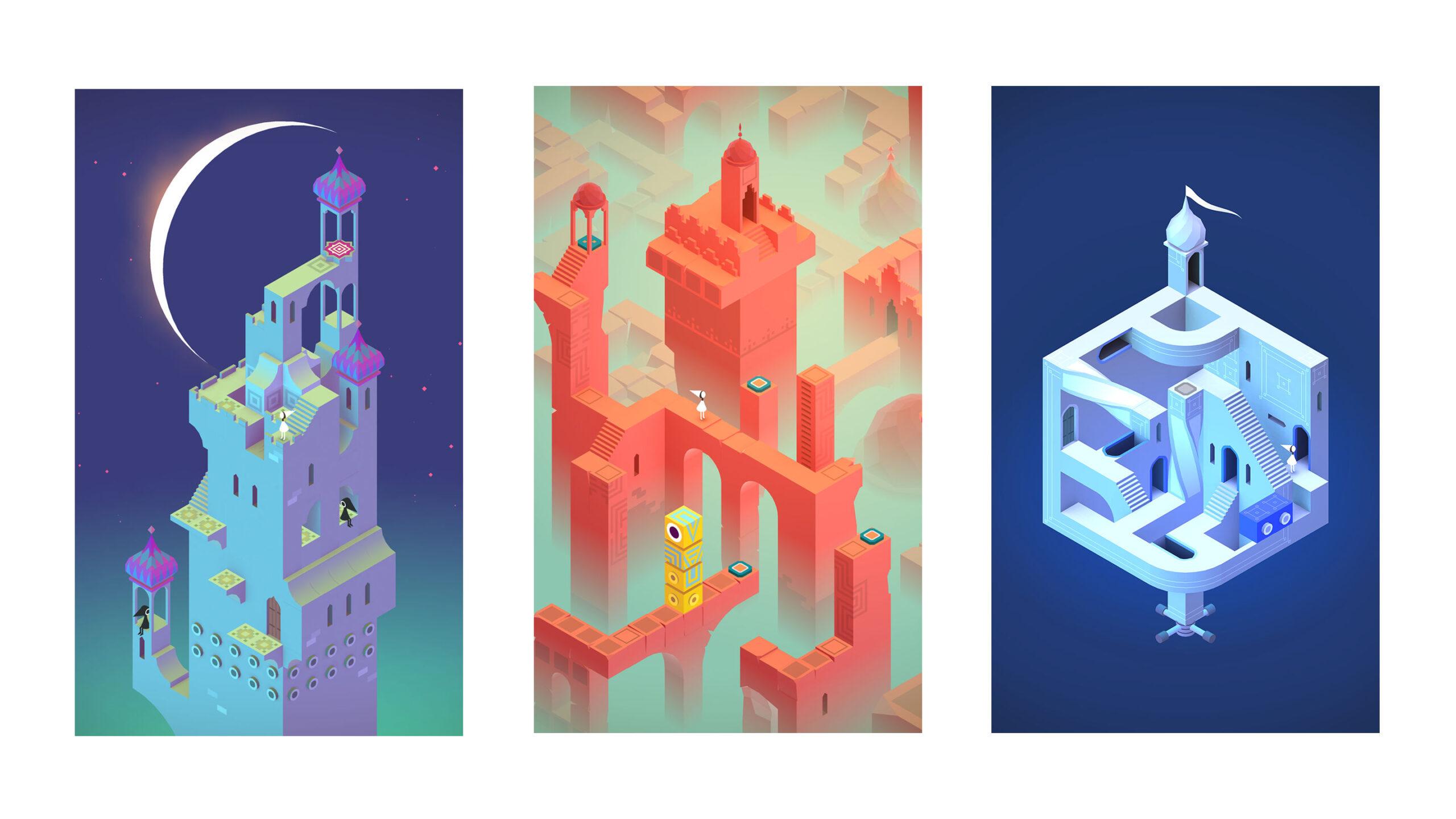Monument Valley is a unique puzzle game that incorporates “impossible objects” and optical illusions – essentially an interactive M.C. Escher piece. Developed by Ustwo Games, this game caters to puzzle game enthusiasts of all ages and fans of visual aesthetics/stunning games. Monument Valley leverages its unique puzzle mechanics not only to challenge players but to also evoke emotion responses as well.
Each level, or chapter, presents structures that “trick” the eye but can be manipulated to create paths. This manipulation of the eye isn’t just a clever design choice but also a narrative tool that mirrors the protagonists’, Ida’s, emotional and physical journey.

“Rotating, seemingly non-sensical castle that changes the entire structure of the level, symbolizing the protagonist’s power to change their perspective and overcome obstacles.”
Monument Valley’s level progression is structured to introduce increasingly complex puzzles and mechanics to further challenge the player’s perception and problem-solving skills. Each level builds on a previously introduced mechanic, ensuring a smooth learning curve. This progression style aligns with the “Mechanics” component of the MDA framework – as rules and structures evolve, more engagement and complexity.

“One of the earlier levels – relatively simple, did not require the manipulation of multiple elements.”
As players advance through the levels, they encounter more intricate architectural puzzles that require “out-of-the-box” thinking. Multiple cogs, and pressure plates, must be manipulated simultaneously. This gradual increase in complexity not only enhances a player’s desire to proceed to the next level and complete more but also mirrors the protagonist’s journey toward understanding and resolution, tying into the game’s narrative.
The integration of music in Monument Valley also enhances the emotional impact of the game. The soundtrack is calming and ethereal – which complements the aesthetic visuals and adds to the “meditative” gameplay experience. This aspect of the game ties into the “Aesthetics” of the MDA framework, where the sensory/auditory stimuli, music, contribute to the overall emotional and cognitive response from the player. What I found most interesting was how the music adapts dynamically to interactions within the game. For example, when certain puzzle elements are activated (i.e. staircases) or when a solution is found, musical cues and changes in the soundtrack made me think, “Okay, I’m on the right track” – it was a form of reinforcement. This implementation not only rewards the player but also deepens the interactiveness of the immersive experience. Everything felt significant and impactful.
The core of Monument Valley’s puzzle mechanics, what it’s most known for, is the involvement of the manipulation of illusions and player perspective. The game employs impossible objects and optical illusions that players must navigate by changing their viewpoint by rotating a structure for example – the Penrose triangle is a good example. These illusions aren’t just visual tricks. They are deeply integrated into the gameplay mechanic, influencing the “Dynamics” part of the MDA framework.

“Penrose triangle, optical illusion.”
The manipulation of the path requires players to think outside spatial constraints – which is the primary objective of the game, shifting perceptions that aligns with the game’s themes of transformation and perspective. The use of illusions sets Monument Valley apart from other games in the puzzle genre.
In Monument Valley, the mechanics of puzzle-solving through architectural manipulation lead to dynamics of perspective shifting and problem-solving, which create an aesthetic experience characterized by wonder, tranquility, and revelation. The game’s level progression, music implementation, and use of illusions are all intertwined to support these outcomes. The calming soundtrack not only enhances the aesthetic appeal but also aids in embedding the player within the thematic and emotional context of the game, making each puzzle not just a challenge to be solved but a step in a larger, more introspective journey.



